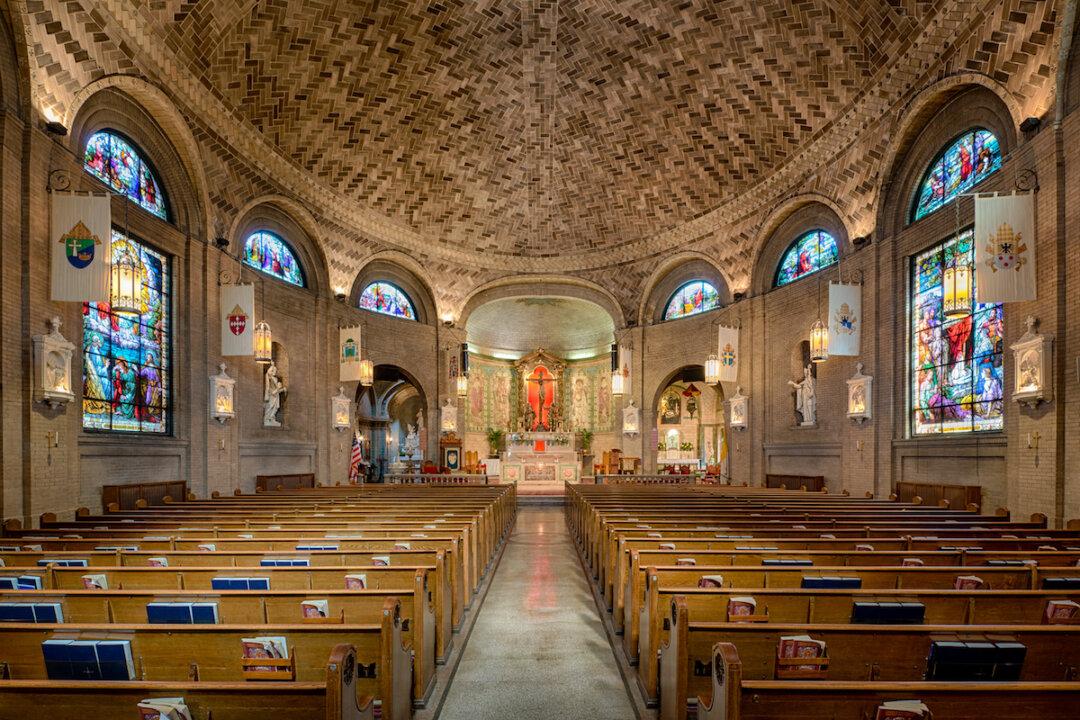There is a deep human need for beauty, and if you ignore that need in architecture, your buildings will not last, since people will never feel at home in them. —Roger Scruton
Let’s begin with a visit to the Basilica of Saint Lawrence in downtown Asheville, North Carolina.When we enter this Spanish Renaissance church, designed by architect Rafael Guastavino, we know immediately that we are in a sacred place. Often, tourists who just moments before were laughing loudly and debating restaurants for lunch fall silent when they step from the bustling sidewalk into the basilica. Here in the quiet shadows, candles glimmer. From the walls, statues of saints look into eternity, while at the front of the church are the figures of Mary and Saint John mourning the Crucifixion. Covering the walls of the apse are polychrome, terra cotta portraits of the Four Evangelists and the angels Raphael and Michael. Above the sanctuary is the largest, freestanding, elliptical dome in North America. This space announces its purpose: worship and prayer.






